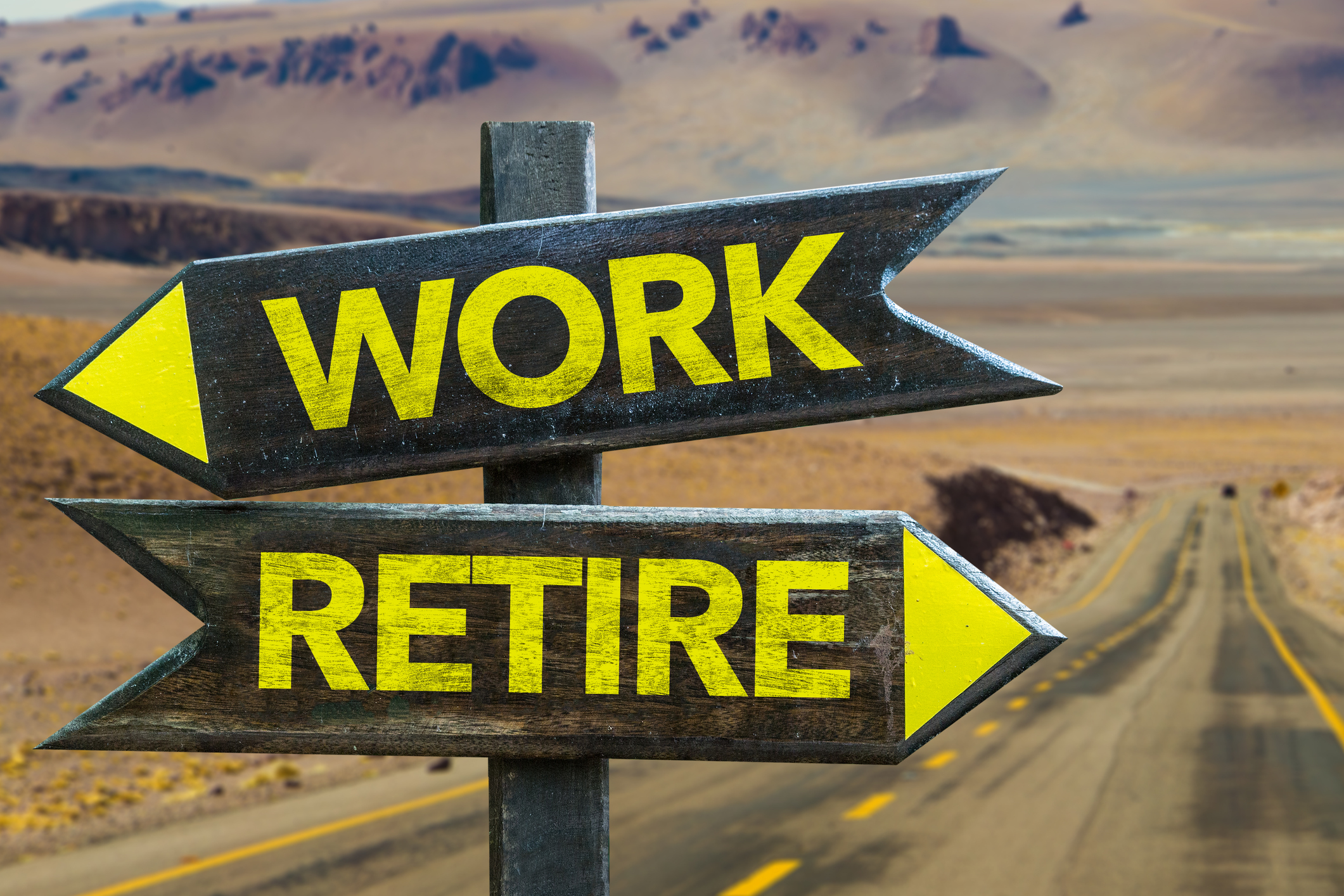Thinking About Unretiring in 2025? Here’s What You Need To Know
Unretiring is a growing trend, with about 37.5% of people age 55+ employed in 2024. Here's a look at what's driving the return to work. Is unretiring right for you?


Thinking of unretiring? You're not alone. Returning to work after calling it quits is still part of the regular routine for many older adults. In 2024, 37.3% of people age 55+ were employed, up from 31.5% in 2000. So much for basking away the hours under the sun.
By comparison, in 1983 the labor force participation rate for people age 65 or over was just 19%, according the the U.S. Bureau of Labor Statistics (BLS).
Today, however, older workers are re-entering the workforce at unprecedented numbers. Although the reasons vary, we can thank inflation, the rising cost of living, current market volatility and overall uneasiness over what the future may hold — among other things.
From just $107.88 $24.99 for Kiplinger Personal Finance
Become a smarter, better informed investor. Subscribe from just $107.88 $24.99, plus get up to 4 Special Issues

Sign up for Kiplinger’s Free Newsletters
Profit and prosper with the best of expert advice on investing, taxes, retirement, personal finance and more - straight to your e-mail.
Profit and prosper with the best of expert advice - straight to your e-mail.
LinkedIn quoted a recent un-retiree as saying, “Depending on when you plan to retire, you may have another 30, 40, 50 or more years of life — and that’s a long time to drift aimlessly,”
What are the motivating factors?
First, people are living longer. According to a United Nations estimate, the world had just 27,000 centenarians in 1970. Now, global centenarians top 722,000 and could reach 3.5 million in 2050. Advances in medicine, improved public health measures, better nutrition and healthier lifestyles all likely contribute to a long life.
Second, Social Security benefits. Working in retirement may help put a little extra cash in your pocket. That is unless you exceed $23,400 per year in 2025 (up from $22,320 in 2024) and you're under full retirement age (FRA), per the Social Security Administration. That means, if you go back to work and you haven't reached your FRA, for every $2 in earnings above the $23,400 limit, $1 in benefits is withheld.
This is called a retirement earnings test exempt amount. However, this only applies if you are under your full retirement age (FRA). If this is the case, one of two different exempt amounts apply — a lower amount in years before the year you reach your FRA and a higher amount in the year you attain FRA.
On the plus side, any benefits withheld while you continue to work are not lost. Once you reach your FRA, your monthly benefit will increase permanently to account for any benefits withheld.
Third, money. More than half, or 53% of respondents of a 2024 CNBC and SurveyMonkey poll say they are behind on retirement planning and savings. In a recent update from Resume Builder, one in eight retired seniors are likely to return to work in 2025. The top reason? An increase in the cost of living. And, although you might be able to live off Social Security as your only source of income, it probably won't be enough to replace your pre-retirement standard of living.
Fourth, making connections. Financial planner Judith Ward said many retirees consider rejoining the workforce because it’s a “powerful way to make social connections and reestablish a sense of purpose.” George Jerjian echoed her sentiment. “Sure, money is a concern, but the biggest retirement challenge that no one talks about, in my experience, is finding purpose.”
Where are unretirees working?
Mark Walton said in his book “Unretired: How Highly Effective People Live Happily Ever After,” that older workers are part of a big change in the American economy. While many can afford to retire, many seniors have no interest in powering down their ambitions to play pickleball, garden, go on a cruise or dabble in hobbies for the next 30 years. Instead, they are finding work in less physical and less stressful jobs. And, employers are benefiting as well from the deep expertise that comes with years of experience.
Most of the 60.3% of baby boomers who held a job in the last year were employed full-time, according to LinkedIn data. The remainder (39.7%) were self-employed. Many boomers also found jobs in the Sun Belt — a favorite region for retirees with sunshine and low taxes that stretches across the southern U.S., from Florida to California.
Besides location, AARP Vice President Carly Roszkowski says, “Many older Americans are “starting their own businesses or driving for Uber or DoorDash — jobs that didn’t exist 15 to 20 years ago.”
As far as mobility, 30% of seniors who have returned to work or are considering going back to work say they would prefer to be fully remote, while 4% would rather do hybrid work and 31% say they would prefer to work in-person. The remaining 35% have no preference.
Proceeding with caution
Retirees who decide to return to work, however, must be careful with their Medicare coverage. That’s because both Medicare Part B and Part D premiums are based on your income. Your premium costs could increase if you begin making more money.
Medicare coverage also comes into play if you go back to work for a company that offers a health care plan that qualifies as primary coverage. If so, you can drop your Medicare Part B and re-enroll later without penalty. Once you're done working, you have eight months to re-enroll or you may incur a late enrollment penalty.
It may also be possible to have both Medicare and private health insurance through your new employer — one will be your primary coverage, and the other will be secondary. If you do have both, you can't put money into a health savings account (HSA) through your employer without facing a tax penalty.
Another consideration before unretiring is the possibility of changes in your taxes. The extra cash you make may push you into a higher tax bracket. This is especially true for anyone with additional income from a pension, retirement account or Social Security.
According to Kiplinger, there are ways around this. You can consider converting some of your tax-deferred retirement accounts into Roths, You'll pay taxes upfront, but you won't pay income tax when you withdraw your money because you already paid the tax on your contributions.
You also don’t have to take minimum distributions from these accounts. That means you aren’t unnecessarily adding income that might push you into a higher tax bracket. A financial adviser may be able to help you understand the big picture while also finding ways to lower your tax burden should you decide to unretire.
How to unretire
If you’re one of the many retirees going back to work, but you're not sure where to start, Kerry Hannon, a workplace author and columnist, recommends focusing on upskilling and cultivating your network. “Getting your wider community involved in your job search — not just family or close friends — will help the most,” she said. “It’s the people who participate in your same hobbies who you don’t know as well who might keep you in mind when they hear of opportunities.”
Unfortunately, getting your foot in the door can be a little more daunting when you're older. "Many older workers fear age discrimination will hurt their chances of landing a role," AARP’s Roszkowski said. “Include your credentials, but don’t include college graduation dates.”
You might also consider semi-retiring, or inching into retirement slowly. You can keep working, but also spend more time on those activities you enjoy. If done well, semi-retirement can be beneficial both financially and psychologically, and it gives you a chance to take a step back and ease into retirement rather than stopping abruptly.
Does the workforce need older workers?
Baby boomers and some of the eldest members of Gen X, who turned 59 1/2 beginning on July 1, 2024, bring a lifetime of experience and skills to the table. Boomers are the generation least likely to feel burned out on the job, according to a recent LinkedIn survey. A separate survey from Bain research showed that they feel more loyal to their employers than other generations. And teams that span generations can generate stronger overall performance and more productive collaboration than those that don't, according to research featured in Harvard Business Review.
Recent findings from LinkedIn’s Workforce Confidence survey also show that more than half of Gen Zers and millennials in the U.S. say they could use a mentor at work. Mentoring relationships can help mentees develop their careers and allow mentors to cultivate a greater sense of purpose and meaning. A win-win for everyone.
Note: A version of this item first appeared in Kiplinger Retirement Report, our popular monthly periodical that covers key concerns of affluent older Americans who are retired or preparing for retirement. Subscribe for retirement advice that’s right on the money.
Related Content
Profit and prosper with the best of Kiplinger's advice on investing, taxes, retirement, personal finance and much more. Delivered daily. Enter your email in the box and click Sign Me Up.

For the past 18+ years, Kathryn has highlighted the humanity in personal finance by shaping stories that identify the opportunities and obstacles in managing a person's finances. All the same, she’ll jump on other equally important topics if needed. Kathryn graduated with a degree in Journalism and lives in Duluth, Minnesota. She joined Kiplinger in 2023 as a contributor.
-
 I'm want to give my 3 grandkids $5K each for Christmas.
I'm want to give my 3 grandkids $5K each for Christmas.You're comfortably retired and want to give your grandkids a big Christmas check, but their parents are worried they might spend it all. We ask the pros for help.
-
 If You're Not Doing Roth Conversions, You Need to Read This
If You're Not Doing Roth Conversions, You Need to Read ThisRoth conversions and other Roth strategies can be complex, but don't dismiss these tax planning tools outright. They could really work for you and your heirs.
-
 Could Traditional Retirement Expectations Be Killing Us?
Could Traditional Retirement Expectations Be Killing Us?A retirement psychologist makes the case: A fulfilling retirement begins with a blueprint for living, rather than simply the accumulation of a large nest egg.
-
 I'm Retired and Want to Give My 3 Grandkids $5,000 Each for Christmas, But Their Parents Don't Want Them to Spend It All.
I'm Retired and Want to Give My 3 Grandkids $5,000 Each for Christmas, But Their Parents Don't Want Them to Spend It All.You're comfortably retired and want to give your grandkids a big Christmas check, but their parents are worried they might spend it all. We ask the pros for help.
-
 I'm a Financial Planner: If You're Not Doing Roth Conversions, You Need to Read This
I'm a Financial Planner: If You're Not Doing Roth Conversions, You Need to Read ThisRoth conversions and other Roth strategies can be complex, but don't dismiss these tax planning tools outright. They could really work for you and your heirs.
-
 Could Traditional Retirement Expectations Be Killing Us? A Retirement Psychologist Makes the Case
Could Traditional Retirement Expectations Be Killing Us? A Retirement Psychologist Makes the CaseA retirement psychologist makes the case: A fulfilling retirement begins with a blueprint for living, rather than simply the accumulation of a large nest egg.
-
 I'm a Financial Adviser: This Is How You Can Adapt to Social Security Uncertainty
I'm a Financial Adviser: This Is How You Can Adapt to Social Security UncertaintyRather than letting the unknowns make you anxious, focus on building a flexible income strategy that can adapt to possible future Social Security changes.
-
 The Stoic Retirement: Ancient Wisdom for Today’s Biggest Life Transition
The Stoic Retirement: Ancient Wisdom for Today’s Biggest Life TransitionA "Stoic retirement" doesn't mean depriving yourself. It's a character-based approach to life and aging that can bring calm and clarity.
-
 11 Outrageous Ways To Spend Money in Retirement
11 Outrageous Ways To Spend Money in RetirementWhether you have excess cash to spend or want to pretend, here’s a look at 11 ridiculous ways retirees can splurge.
-
 I'm a Financial Planner for Millionaires: Here's How to Give Your Kids Cash Gifts Without Triggering IRS Paperwork
I'm a Financial Planner for Millionaires: Here's How to Give Your Kids Cash Gifts Without Triggering IRS PaperworkMost people can gift large sums without paying tax or filing a return, especially by structuring gifts across two tax years or splitting gifts with a spouse.
-
 'Boomer Candy' Investments Might Seem Sweet, But They Can Have a Sour Aftertaste
'Boomer Candy' Investments Might Seem Sweet, But They Can Have a Sour AftertasteProducts such as index annuities, structured notes and buffered ETFs might seem appealing, but sometimes they can rob you of flexibility and trap your capital.